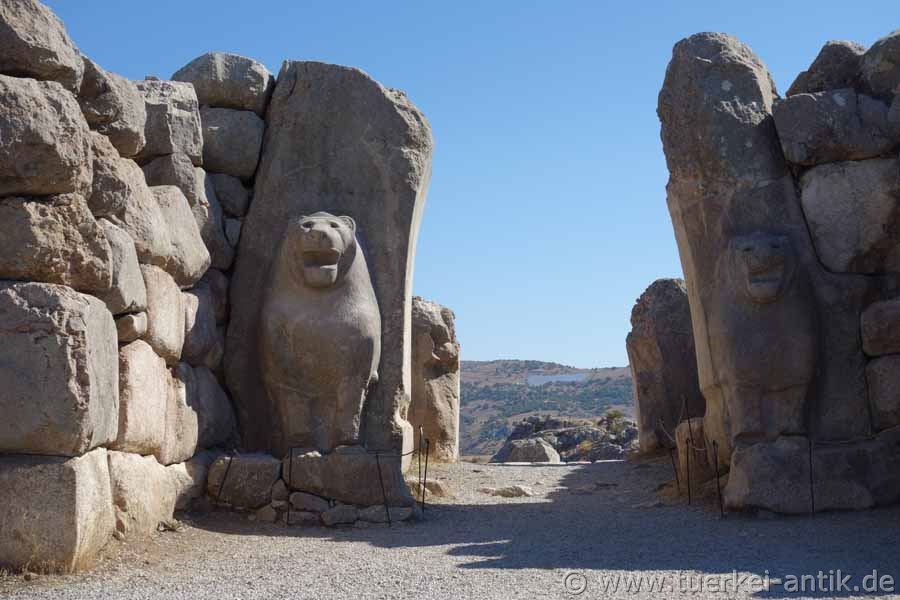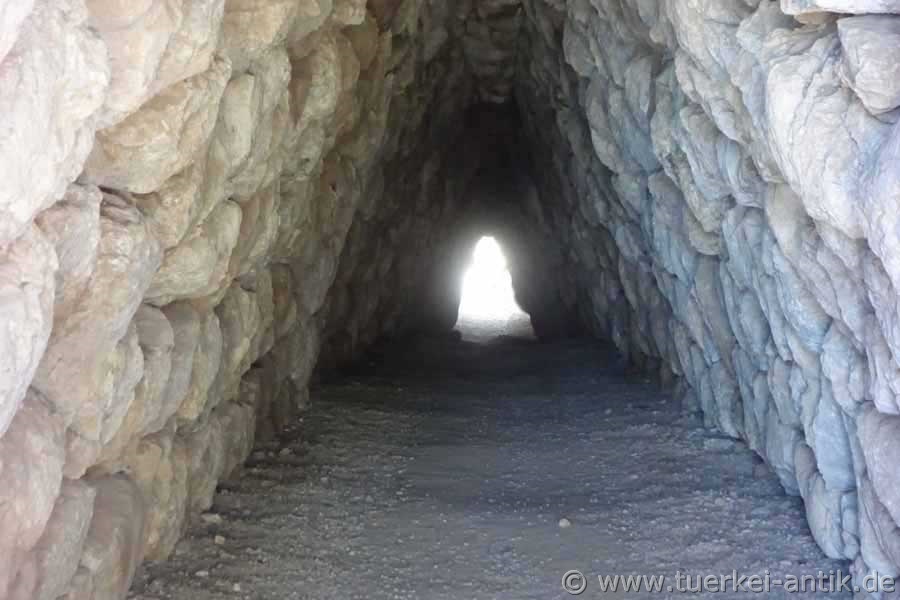 |
| Hattusa in Galatia | |||
|
|
|
||
| Partial reconstruction of the city wall | |||
|
The first settlements in the Hattusa area took place in the 6th millennium BC. They were small settlements throughout. Such a hamlet was once located on top of the ridge of Büyükkaya. This is the first trace of human settlement in the later urban area of Hattusa. Continuous settlement began towards the end of the 3rd millennium B.C., in the developed early bronze age. The Hattier founded a settlement here and called it Ḫattuš. |
|||
|
|
|||
| Temple 1 in the Lower Town | |||
|
In the late Early Bronze Age a permanent settlement of the place by the Hattier began. The settlement developed into an important centre during the Middle Bronze Age - so important that a trading post of Assyrian merchants was established here in the 19th/18th century BC. |
|||
|
|
|||
| Storage vessels in Temple 1 | |||
|
The excavated ruins show that the city Ḫattuša perished in a great fire around 1700 BC. There is even a cuneiform text in which King Anitta of Kuššara reports that he defeated King Piyušti of Ḫattuša and destroyed his city. He cursed the city forever, sowed it with fennel and set up his trading centre in the city of Kaneš, 160 km southeast, which already possessed power and prestige as the capital of the Assyrian trading colonies. |
|||
|
|
|||
| The Lion Gate | |||
|
With the Assyrian traders, writing first came to Anatolia. Purchase, sale, loans and other transactions were recorded in Accadian cuneiform. And the name of the place is also handed down on the tablets: His name was still - or already - Hattus. |
|||
|
|
|||
|
A Poterne (tunnel into the city) |
|||
|
|
|||
|
The territory of the Hittites extended in its heyday in the south to the northernmost province of the Egyptian pharaonic empire. Around 1200/1180 B.C. the city was obviously gradually abandoned. The decline of the Hittite Empire led to the disempowerment of the city; it also lost its role as a political, economic and religious centre. |
|||
|
|
|||
| hieroglyphic chamber | |||
|
|
|||
|
Ḫattuša was among other things a city of gods and temples. In the central upper town numerous temples of a sacral area could be uncovered. In addition, the latest excavations uncovered areas of the city that were used for various non-religious activities. The city gates of the upper town decorated with lions, sphinxes or the relief depiction of a god may be part of a representative processional route. The Sphinx Gate (Wall of Yerkapi) in the New Town (Upper Town) is the highest point of the city with 1242 meters. So far, only small areas of the residential areas and workshop districts have been uncovered in Ḫattuša. |
|||
|
|
|||
|
|
|||
|
The green stone |
|||
|
|
|||
|
Two kilometres northeast of the then capital Hattuša lies the former Hittite sanctuary Yazilikaya (rock described in Turkish). |
|||
|
|
|||
|
|
|||
|
The Way to the Yazilikaya rock sanctuary |
|||
|
|
|||
|
|
|||
| In the rock sanctuary of Yazilikaya | |||
|
The natural rock chambers A and B of the sanctuary are open at the top and have a wall height of two to twelve metres. Two processions of male and female members of the Hittite pantheon and the alleged builder Grand King Tudhalija IV can be seen on reliefs there. In front of the two chambers lay temple-like buildings, of which the foundation walls have been preserved. During the time of the Hittite empire, the site was the scene of ritual acts whose content is still unclear. |
|||
| Photos: @chim | |||
| Translation aid: www.DeepL.com/Translator | |||
| Source: Wikipedia and others | |||
|
|
|||



